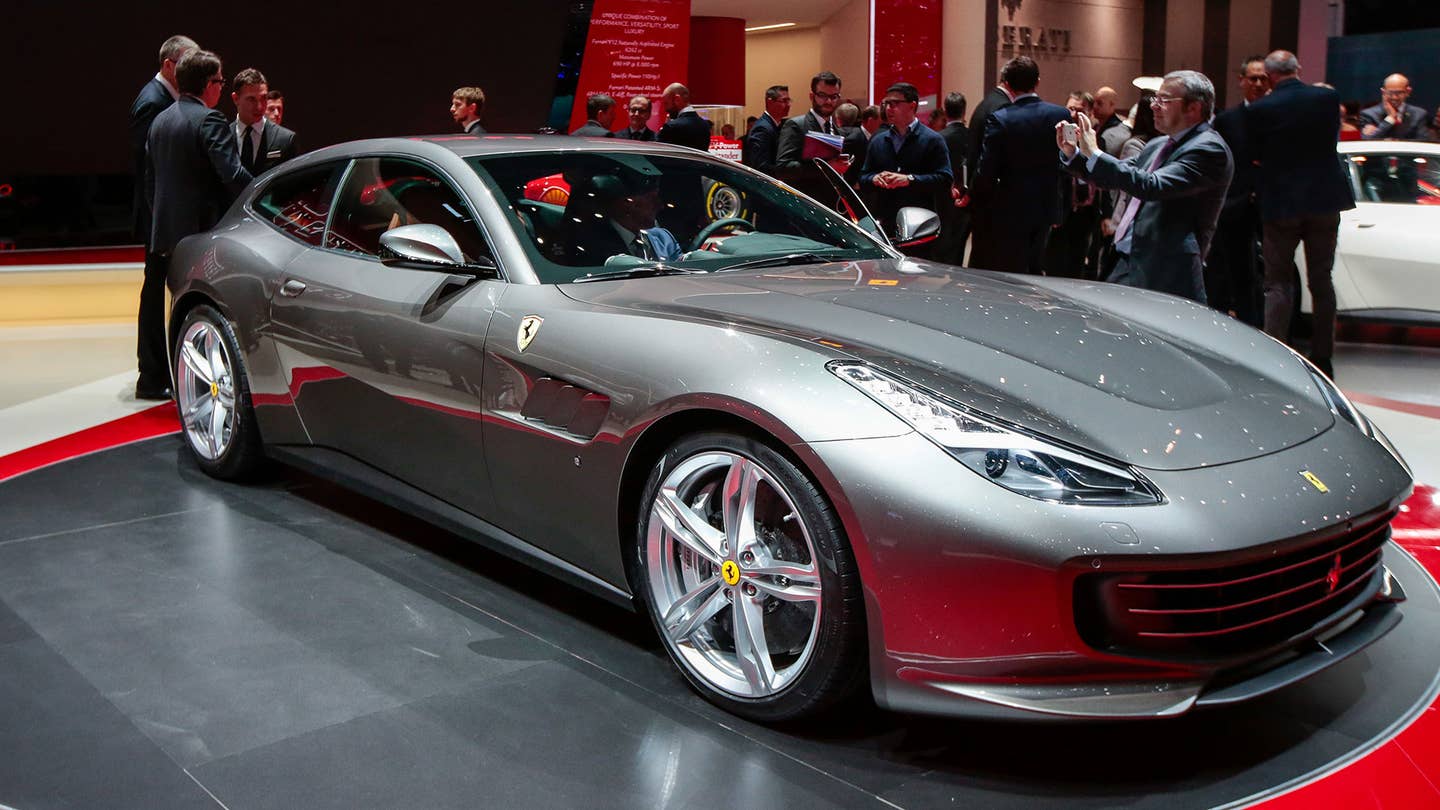Behind the Scenes in Geneva With the Ferrari GTC4 Lusso
Our favorite kind of weird.

While high-end luxury and sporting automakers like Rolls-Royce, Bentley, Maserati, and Lamborghini have gone to painstaking, expensive, and occasionally hideous efforts to lure in new customers—or at least impede their current customers’ magnetic trajectory toward the Range Rover dealer for their everyday cars—by introducing their own high-performance SUVs, iconoclastic Ferrari charted their own path toward outrageous and exclusive all-weather capability with the FF, a uniquely styled super station wagon and the brand’s first four-wheel-drive vehicle. Having a preternatural affection for all-arounders, cars that are good at everything, we found the FF worthy of slavering worship.
So, as part of its ongoing efforts to fend off building a truck, Ferrari has now given that wicked 4x4 a refresh. More than a “face lift” but less than a complete overhaul, the update is significant enough to merit a new name, spelled out like some of Ferrari's other recent models in a heritage-recalling run-on: GTC4 Lusso.
"Why did we change the name?" Ferrari chairman Sergio Marchionne asked somewhat rhetorically. "How long have you got?"
Monikers aside, real changes abound on, and beneath, the surface. Classic Ferrari features have been grafted elegantly onto the distinctively idiosyncratic body, including twin tail lamps on the one-inch wider rear and functional vents on the front fenders. Novel Ferrari features, such as a four-wheel-steering system, have also been spliced in. There's also a more distinct curve to the rear roofline and more distinct creases to the body. The latter provides what the designers call a “diaposon theme,” whatever the hell that is. The former gives the grand tourer a rear profile that more closely resembles the Ferrari Daytona or Porsche 928. This is a high compliment.
"Every time we go to more of a hatchback design, Daytona comes to mind for us," says Nicola Boari, head of product communications. "But the reason we didn't push it that far is because we would lose functionality, and the drivers of this car drive it sixty percent of the time with passengers and fifty percent more miles than any other Ferrari model. So we couldn't lose the luggage space with more of an extreme fastback."
Updates have been made to the glorious, naturally aspirated V12 engine, which now puts out 681 hp and 514 lb-ft of torque—good for a 3.3-second sprint to 60 mph and a top speed of 208 miles per hour. That’s all well and good, but we’re most interested in the interior.
A new seat design does offer more refinement, but our eyes are drawn mainly to the new dashboard, which has fewer but more pronounced circular HVAC vents that leave room for a larger center tray for all of your electronic addictions, a bigger “Dual Cockpit” readout above the glove box—featuring even more interactive gauges and functionality to terrify and occupy your passenger—as well as an all new, 10.25-inch capacitive touch center infotainment screen. Not that you’ll ever want to take you hands off the perfectly shaped, now with a smaller diameter. We're already fantasizing about driving this car up and down one of the world’s classier coastlines.
Changes have also been made to the custom, $30,000 six-piece leather luggage set—ideal for our hypothetical crew’s cashmere sweaters and Gucci loafers.
"We have updated the design of the baggage to match the new seats," Boari says, showing off the new semi-aniline leather and new wheelie bag. "And for once, we think also of the woman who sits in the car," he says, pulling a gorgeous handbag from the ample trunk and dangling it from his finger. "The perfect combination of sport and luxury—rich materials, but nothing so indulgent as to add weight."
When it comes to Ferrari, the sentiment works in several contexts.
